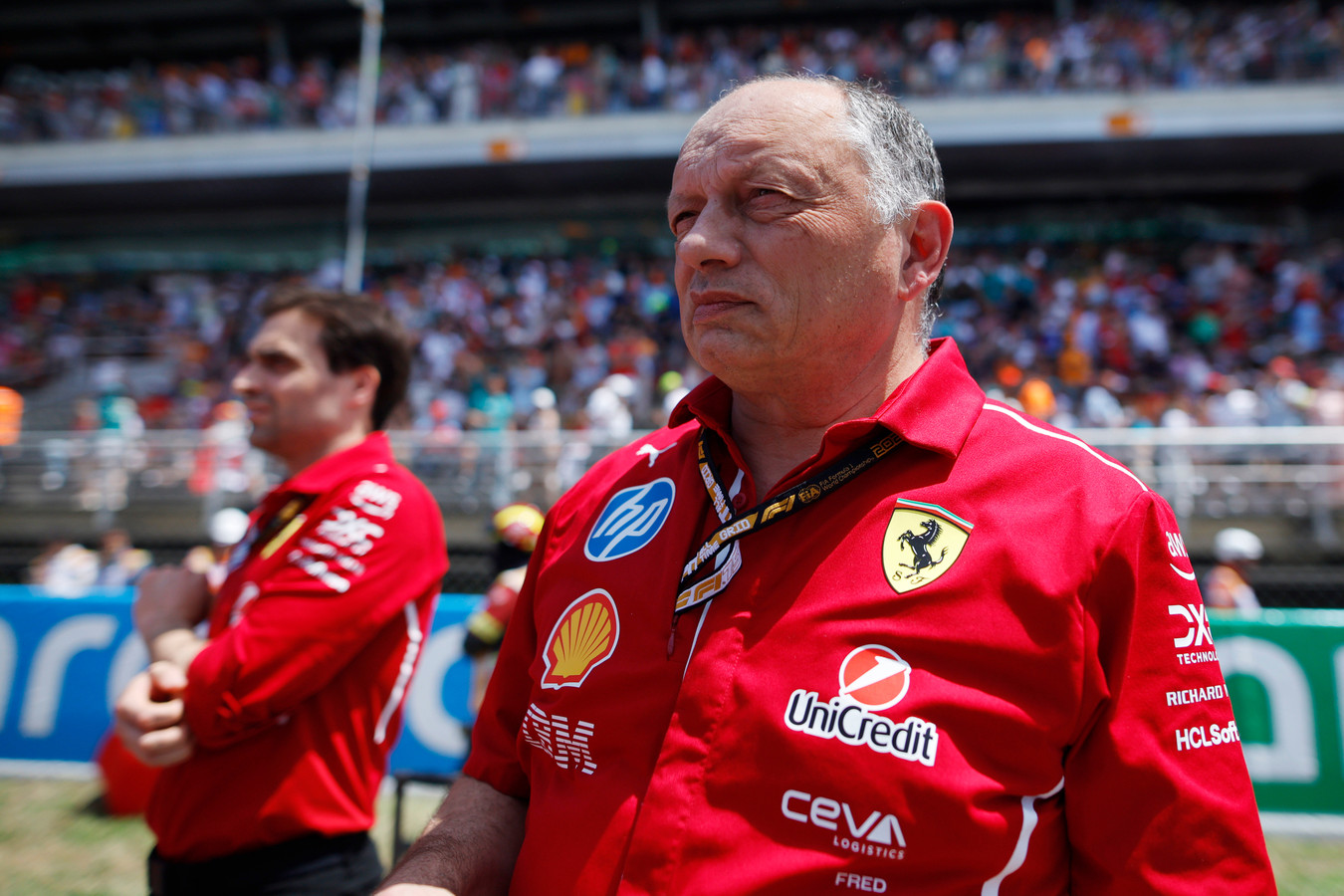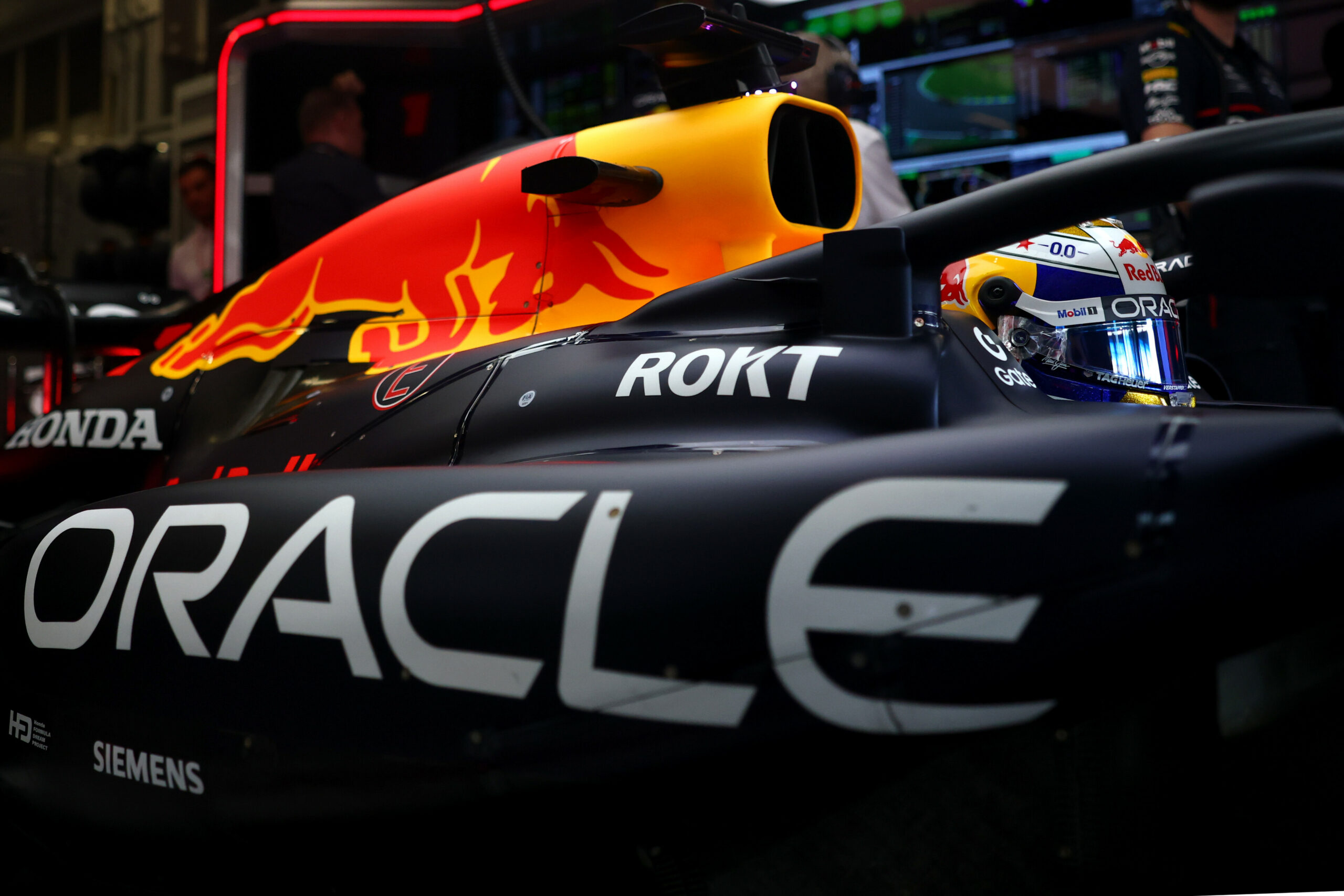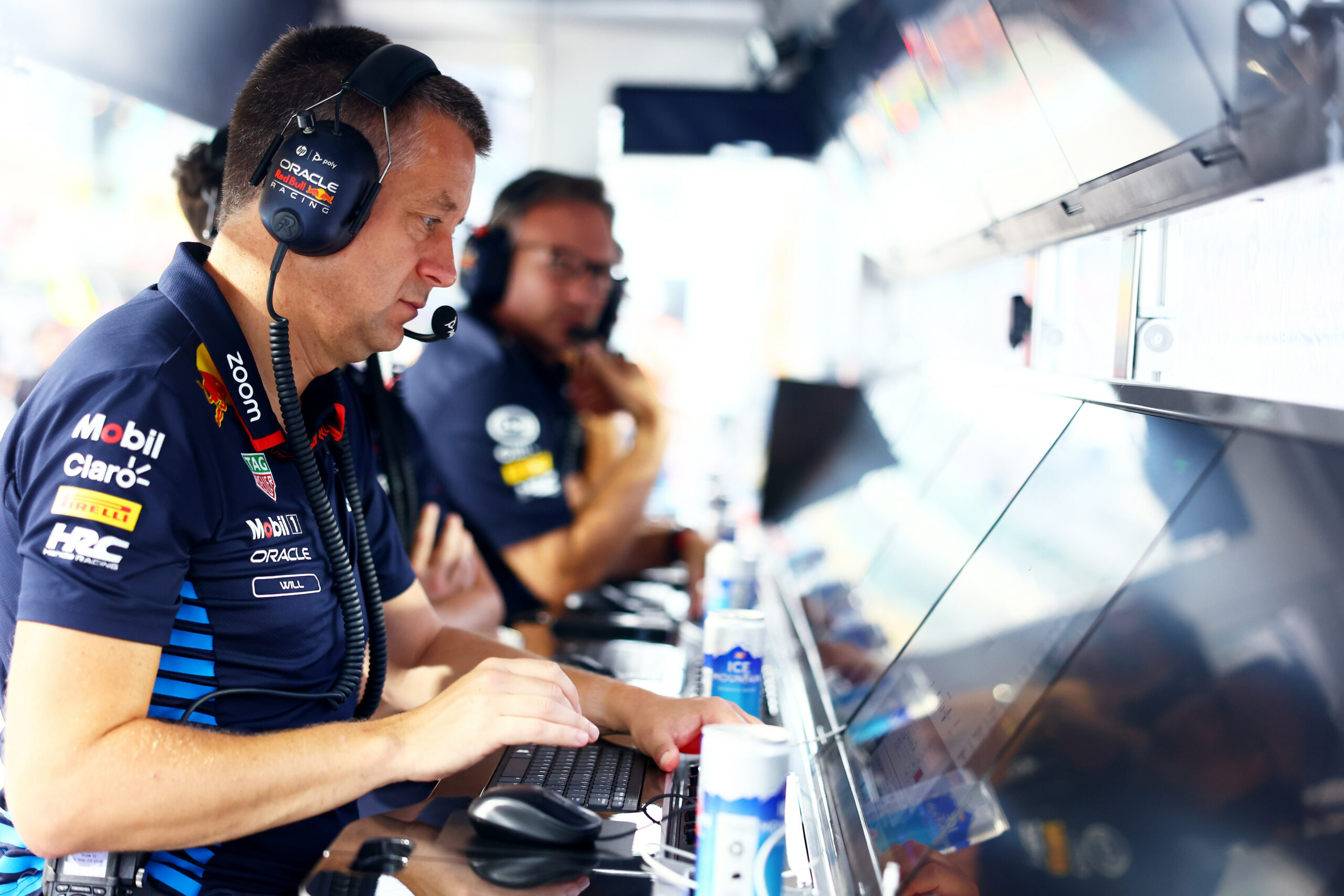Ferrari team principal Fred Vasseur has shared his insights into the tricky SF-25, Charles Leclerc’s strategy call to pit for slicks on the formation lap, and the difficulties Lewis Hamilton experienced following their rather underwhelming performance at the rain-affected F1 British GP on Sunday.
Despite setting competitive lap times in the practice sessions, both Ferrari drivers made errors during their final flying lap in Q3 and only managed to qualify on the third row.
Although Nico Hülkenberg beat Hamilton to third and earned his maiden F1 podium in an epic fashion, the seven-time champion crossed the line in a respectable fourth place. Unfortunately, his run of 12 consecutive podium finishes at Silverstone has now ended.
Meanwhile, Leclerc made the bold but clearly incorrect call to pit for slicks on the formation lap. The Monégasque’s race never really recovered, and he ultimately finished outside the points in P14.
SF-25 didn’t lack pure pace but struggled in dirty air
Speaking in a print media session after the race, Fred Vasseur shared his thoughts on why the SF-25 struggled in the treacherous conditions on Sunday despite generating a decent amount of downforce.
Clarifying that Ferrari were running less downforce than either McLaren at the F1 British GP, Vasseur maintained that the SF-25 wasn’t lacking in pure pace. Noting that Leclerc’s call to pit for the slicks on the formation lap had utterly compromised his race from the get-go, the Frenchman claimed that their primary problem stemmed from stewing in dirty air and the inability to overtake faster.
Nonetheless, stating that the majority of the drivers were lamenting their final results at Silverstone, Vasseur emphasised how difficult it was to make the right strategy choices in the tricky changeable conditions.
“Yeah, but we were a step down compared to McLaren. We had much more downforce than Max [Verstappen]. But we were also much faster than Max. I’m not sure that the pure pace is the main issue today. What is true is that for Charles [Leclerc], the race was done on Lap 1 when he made the call to pit for slicks.
“And then the main issue we had today was that we struggled a lot when we were in the dirty air to overtake. We spent our lives overtaking, sometimes 10 laps, and then we were much faster. I think it was a difficult weekend, difficult for the strategy.
“Today I think everybody has tonnes of regrets, except Norris probably and Nico [Hülkenberg]. But when you finish a race like this, you always have the feeling that if I had pitted one lap before or one lap after, it would have been much better. Let’s focus on the quali and the championship.”
Leclerc made the wrong call but Vasseur admits he could’ve stepped in
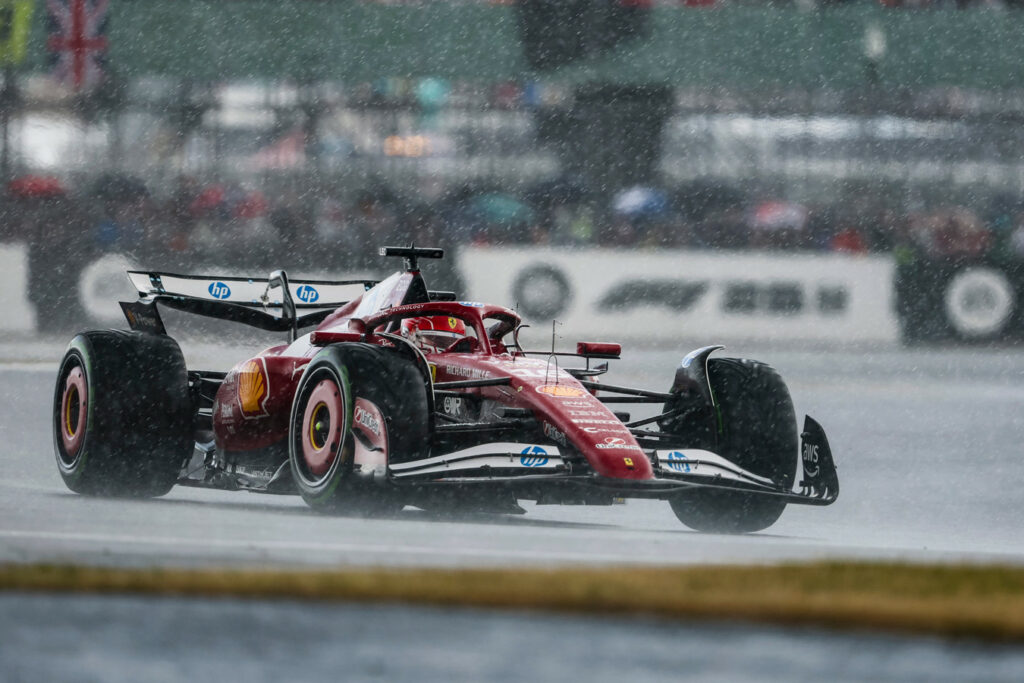
In terms of how much authority Leclerc had to make the decision to pit for the mediums on the formation lap and how the Ferrari pit wall managed the subsequent strategy calls at the F1 British GP, Fred Vasseur responded that it was a nuanced situation.
Although he confirmed that Leclerc bears the responsibility for the initial gamble, the 57-year-old added that he could’ve put his foot down as the team boss and instructed the Monégasque to stay on the intermediate tyres. Acknowledging that the on-track feedback from drivers is crucial in such conditions, he also highlighted how difficult it must have been to estimate the level of grip whilst trundling behind the Safety Car.
Remarking that it’s convenient to criticise the decision-making of George Russell and Leclerc with the benefit of hindsight, Vasseur nevertheless surmised that the eight-time race winner had realised the gravity of his error early on since he was bleeding considerable lap time in comparison to the drivers on the intermediates.
“The call is coming from the driver for sure. But also to be fair, I could’ve said no.
“But they are on track. I think the issue in this kind of situation is that you are doing the formation lap behind the Safety Car very slowly. And you have to assess the level of grip in these conditions and I’m not sure that it’s that easy.
“Russell and Charles took the decision to pit for slicks. Easy to say at the end that it was not the right call. But I think Charles, Lap 1, understood that it was not the right call because he was already five seconds slower than the guy in front of him.”
Hamilton’s struggles stemming from an inconsistent SF-25
With regard to Hamilton’s statement after Sunday’s British GP that the SF-25 is the most difficult car he has ever driven at Silverstone and whether there are any particular characteristics that make it such a challenging single-seater for him to handle, Fred Vasseur insisted that consistency is the problem.
Acknowledging McLaren’s advantage in this regard and Hamilton’s complaints about a snappy car in the wet at Silverstone, the Frenchman emphasised how the SF-25’s competitiveness ebbs and flows in different stages of a race depending on the tyre pressure.
“I didn’t have time to discuss with Lewis [Hamilton] about the balance, but I think he found the car and he said this on the radio, very snappy.
“But it was not always true. I think it’s very difficult to have a consistent car. It’s where McLaren is much faster than everybody because if you have a look, everybody is competitive but [for] a couple of laps.
“Let’s say that we are competitive at the beginning of the stint or at the end of the stint; all depend on the tyre pressure. As soon as you are a bit away of this that you are struggling a lot. But let me discuss with Lewis.”
No one to blame for timing of Hamilton’s pit stops
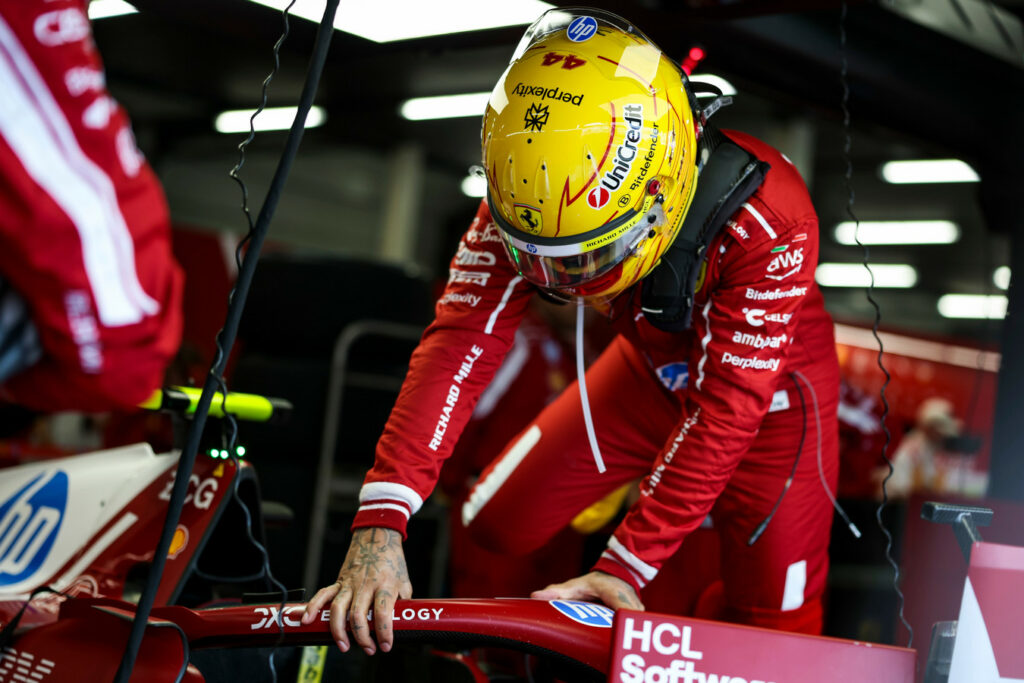
Regarding the mistakes Hamilton made on his out lap that potentially cost him the podium at the F1 British GP and whether it was his decision to pit for the softs on Lap 41, Fred Vasseur refused to assign blame to either the driver or the pit wall.
Underlining that it is very challenging to gauge the appropriate timing of the pit stops under changeable conditions, Vasseur also addressed the timing of Hamilton’s first stop and reiterated how easy it is to make the correct observations with hindsight. Additionally, he revealed that a GPS anomaly put the Brit’s race in further jeopardy.
“On lap 41, the last pit stop, when Nico pitted the lap after, I think you can say now that it was probably one lap too early because he went straight in Turns 3-4 and he lost 4 or 5 seconds in these two corners. But I think it was Alonso who pitted before and he was already faster on some corners than all the guys on intermediate.
“It’s the kind of situation where if you wait that the others are doing the move before you, it’s always too late.
“I think it’s quite easy after the race to say that the first pit stop could’ve been better to stop one lap before, the second pit stop to stop one lap later. But honestly on this, when you have to take the decision on the pit wall, it’s a very tricky one because you have to be always in anticipation.
“And on top, we lost the GPS of Lewis. In the race, it meant that we were completely blind and we didn’t know where the car was; it was a difficult one.”

